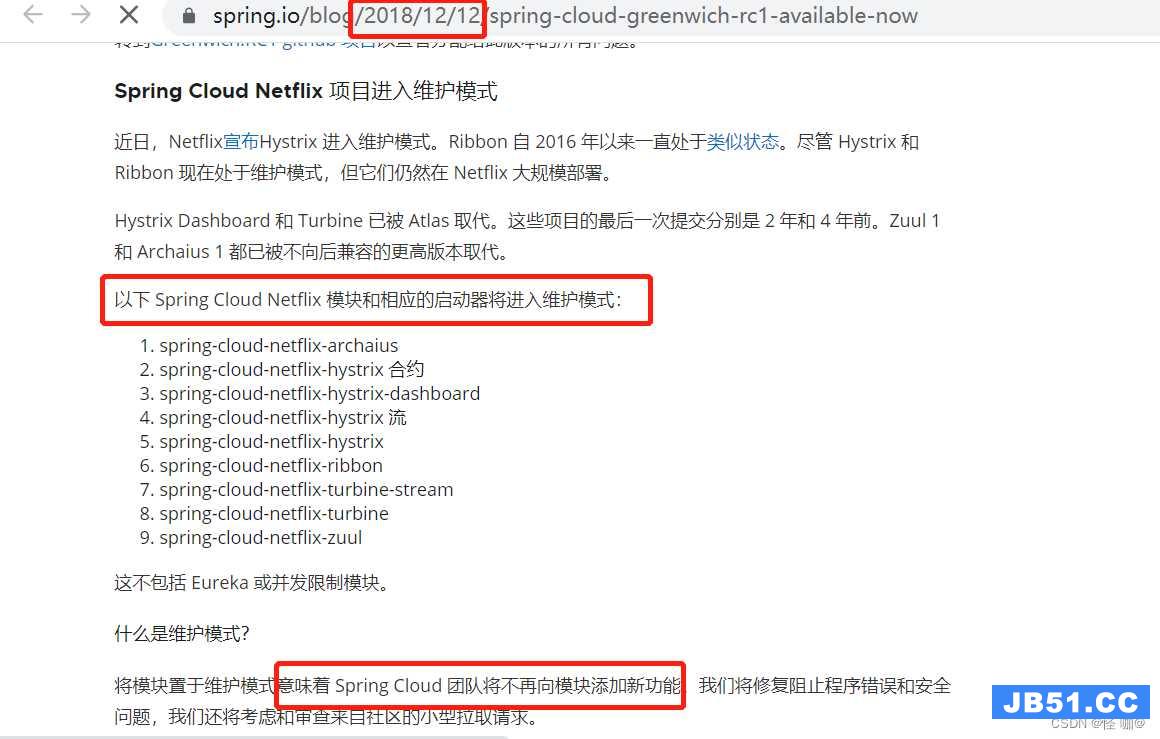接口简介
JDK中提供了java.net.URL这个类来用于获取不同种类的资源(根据不同前缀的url可以获取不同种类的资源)。但是URL这个类没有获取classpath和ServletContext下的资源的能力。因此Spring提供了Resource接口,用于获取各种资源。
Resource接口
spring中的org.springframework.core.io.Resource接口代表着物理存在的任何资源,其继承于org.springframework.core.io.InputStreamSource。
Spring的资源接口是一个更强大的接口,用于抽象对低级资源的访问。
Resource接口的主要方法如下:
public interface Resource extends InputStreamSource {
boolean exists();
default boolean isReadable() {
return exists();
}
default boolean isOpen() {
return false;
}
default boolean isFile() {
return false;
}
URL getURL() throws IOException;
URI getURI() throws IOException;
File getFile() throws IOException;
default ReadableByteChannel readableChannel() throws IOException {
return Channels.newChannel(getInputStream());
}
long contentLength() throws IOException;
long lastModified() throws IOException;
Resource createRelative(String relativePath) throws IOException;
@Nullable
String getFilename();
String getDescription();
}
关于上面提供的getURI和getURL方法这边做下解释。URI用于唯一指定互联网上一个资源的名字,我们可以理解为一个资源的唯一id。URL代表一个资源的唯一地址,我们通过这个地址可以在互联网上寻找到这个资源。通常可以用URL来代替URI。
Resource继承了InputStreamSource接口,下面是其定义:
public interface InputStreamSource {
InputStream getInputStream() throws IOException;
}
Resource的比较重要的方法如下:
- getInputStream(): 定位和打开resource, 返回InputStream 来读取资源。每一次调用都会返回一个新的InputStream,调用者负责将其关闭。
- exists(): 返回boolean,用来判断资源是否存在
- isOpen(): 返回boolean,用来判断资源是不是已经存在一个open stream处理器。 true表明InputStream不能被多次读取,那么这次的读取会被关闭,以避免资源泄露。false是所有正常资源实现的返回,有可能会抛异常:InputStreamResource。
- getDescription(): 返回资源的描述,用于错误输出。通常这会返回resource URL的全名。
其他的方法可以让你获取到代表resource的URL或者File对象。
Resource接口在Spring代码中非常常用,你也可以考虑应用到你的程序中。
内置的Resource实现
Spring中提供了很多Resource接口的实现类。主要有ByteArrayResource,ClassPathResource,DescriptiveResource,FileSystemResource,InputStreamResource,PortletContextResource,ServletContextResource和UrlResource。常用的有:
- ClassPathResource:通过 ClassPathResource 以类路径的方式进行访问;
- FileSystemResource:通过 FileSystemResource 以文件系统绝对路径的方式进行访问;
- ServletContextResource:通过 ServletContextResource 以相对于Web应用根目录的方式进行访问。
- UrlResource :通过java.net.URL来访问资源,当然它也支持File格式,如“file:”、“http:”。
ResourceLoader接口
ResourceLoader接口用来加载Resource资源。
public interface ResourceLoader {
Resource getResource(String location);
}
所有的ApplicationContext类都实现了ResourceLoader接口,所以我们可以使用context来加载resource。
不同类型的ApplicationContext会返回不同的Resource。
当你在特定的应用程序上下文上调用getResource(),并且指定的位置路径没有特定的前缀时,你将返回适合该特定应用程序上下文的资源类型。例如,假设对ClassPathXmlApplicationContext实例执行了以下代码片段:
Resource template = ctx.getResource("some/resource/path/myTemplate.txt");
ClassPathXmlApplicationContext返回ClassPathResource,FileSystemXmlApplicationContext返回FileSystemResource,WebApplicationContext返回ServletContextResource。 他会返回和ApplicationContext相对应的Resource实现。
当然,你可以强制ClassPathResource使用,而不管ApplicationContext到底是什么。使用的方法就是在资源路径前面加前缀。
Resource template1 = ctx.getResource("classpath:some/resource/path/myTemplate.txt");
Resource template2 = ctx.getResource("http://myhost.com/resource/path/myTemplate.txt");
Resource template3 = ctx.getResource("file:///some/resource/path/myTemplate.txt");
Resource[] template4 = ctx.getResources("file:///some/resource/path/my**a.txt");
ResourceLoaderAware接口
ResourceLoaderAware接口是一个特殊的回调接口,表明该组件需要提供一个ResourceLoader的引用。 下面是ResourceLoaderAware的定义:
public interface ResourceLoaderAware {
void setResourceLoader(ResourceLoader resourceLoader);
}
一个Bean如果实现了ResourceLoaderAware接口,容器在加载Bean的时候会给这个Bean注入一个ResourceLoad实现类(容器设置的ResourceLoad就是容器本身,因为所有的Spring application contexts 都实现了ResourceLoader 接口),利用这个实现类也可以加载Resource资源。
Resources as Dependencies
不知道在讲什么,后续再整理。。。
构造 ApplicationContext
//从classpath下寻找配置文件构造ApplicationContext
ApplicationContext ctx = new ClassPathXmlApplicationContext("conf/appContext.xml");
//从当前工作目录寻找配置文件构造FileSystemXmlApplicationContext
ApplicationContext ctx = new FileSystemXmlApplicationContext("conf/appContext.xml");
//由于加了classpath前缀,所以从classpath下寻找配置构造FileSystemXmlApplicationContext
ApplicationContext ctx = new FileSystemXmlApplicationContext("classpath:conf/appContext.xml");
//以MessengerService类所在的路径为基准路径,寻找services.xml和daos.xml作为配置文件
ApplicationContext ctx = new ClassPathXmlApplicationContext(new String[] {"services.xml","daos.xml"},MessengerService.class);
通配符形式构造资源
ApplicationContext ctx = new ClassPathXmlApplicationContext("classpath*:conf/appContext.xml");

 这篇文章主要介绍了SpringCloudAlibaba和SpringCloud有什么区...
这篇文章主要介绍了SpringCloudAlibaba和SpringCloud有什么区... 本篇文章和大家了解一下SpringCloud整合XXL-Job的几个步骤。...
本篇文章和大家了解一下SpringCloud整合XXL-Job的几个步骤。... 本篇文章和大家了解一下Spring延迟初始化会遇到什么问题。有...
本篇文章和大家了解一下Spring延迟初始化会遇到什么问题。有... 这篇文章主要介绍了怎么使用Spring提供的不同缓存注解实现缓...
这篇文章主要介绍了怎么使用Spring提供的不同缓存注解实现缓...